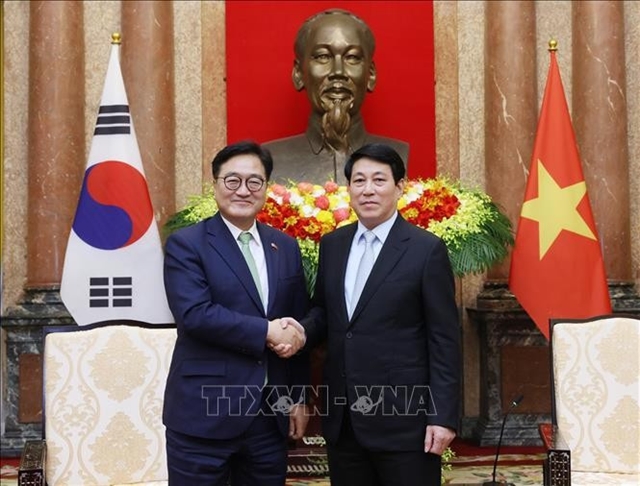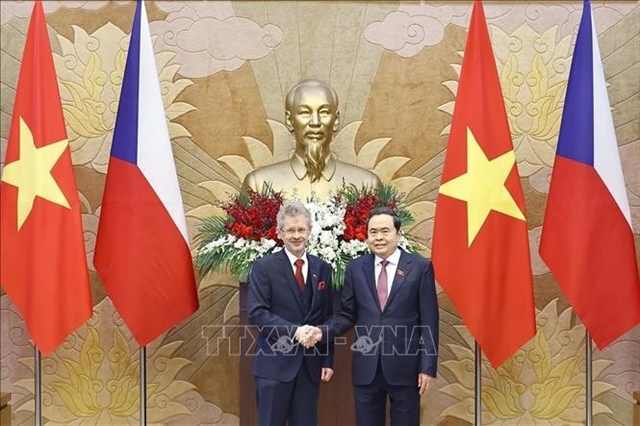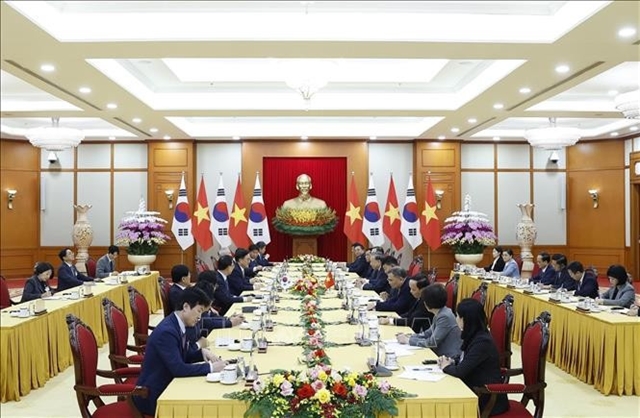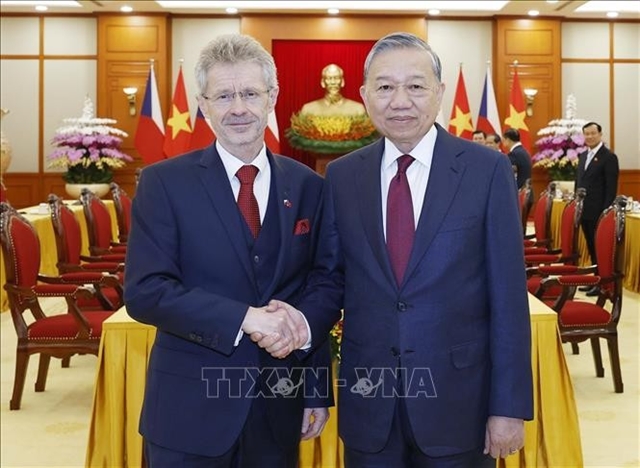 Inner Sanctum
Inner Sanctum

Young man Nam Thi, who fell in love with poetry when he was a child, is a poet who is famous for his performance poetry. Việt Nam News talks with Thi about his works and his love for poetry.
Young man Nam Thi, who fell in love with poetry when he was a child, is a poet who is famous for his performance poetry. Thu Ngân talks with Thi about his works and his love for poetry.
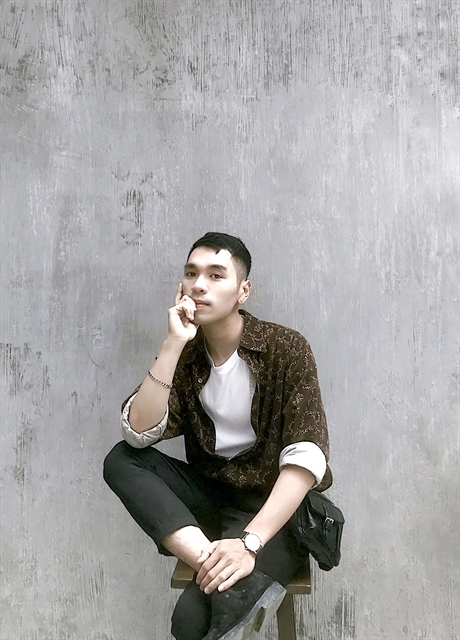
|
| Nam Thi |
Inner Sanctum: Please tell us something about yourself?
My name is Nam Thi, which means 'poetry in Vietnamese'. I was born and grew up in a family that loves literature and art in the capital city of Hà Nội.
My father wrote poetry very well. I am especially proud that my great-grandfather is poet and translator Dương Tường. Perhaps that is why I am fortunate to inherit a bit of the quintessence of the previous generations to be able to enter the world of poetry. Besides being a young poet, I also work in journalism and content creation.
Inner Sanctum: When people talk about you, they often mention performance poetry. What is it, and how has it developed in the world and in Việt Nam?
In fact, performance poetry is not new. It is one of the two prominent postmodern poetic forms in the US from the last decades of the last century. It was born when some poets found that language has a certain limit in its ability to express the image and meaning of a poetic work. Performance poetry combines many other elements of sound, images, figures and other features of expression.
In Việt Nam, I am not a pioneer. Older people have done it; even my great-grandfather Dương Tường wrote visual poetry in the past. It's just that I was lucky to spread it.
There are many views and definitions of performance poetry, but here I would like to give a concise and simple interpretation of my thinking: "When we take the word of poetry out of paper, and combine it with other artistic elements, and then send them to the audience, I consider that to be performance poetry."
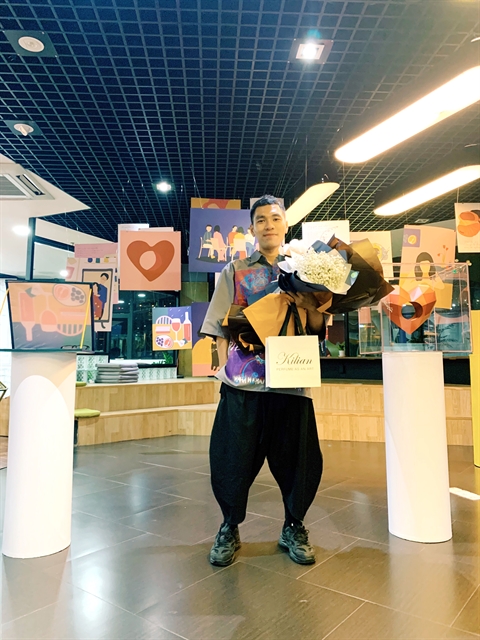
|
| Nam Thi at a poetry performance. Born in a family that loves literature and art, Thi loves poetry since he was young. VNS Photo |
I say that because, in fact, the way I do it is not based on any academic theory. I simply want my poetry to be filtered through other artists' aesthetic thinking, then use their artistic expertise to re-express my poetry. My poetry has broadened the horizon of perception, living with many different forms but not deviating from its poetic nature.
Inner Sanctum: What inspired you to organise performance poetry, which many young people are not familiar with?
First, the origin of language is sound, because the voice always comes before writing. So I put the text that was on paper back to its original state, but I want it to be contemporary, not in the past.
Second, the process of Vietnamese poetry has come a long way from the time when the reader must fully understand a poet's intentions. Modern poetry is emotionally evocative, meaning that it lives independently in the author or in each reader individually depending on his or her inner world. People who read poetry often say: "Your poetry is beautiful, but it's too difficult to understand." I want everyone to understand that the important thing is what it evokes in you, how its aesthetic value affects you. You don't need to understand me.
Third, as I shared above, since the time of my great-grandfather Dương Tường and his friends, new forms of poetry in Việt Nam have existed. Almost 50 years have passed, but today it is strange to the masses. I am a young person, so I want to contribute to turning strangers into acquaintances.
Inner Sanctum: As performance poetry is not really popular in the country, how did you and others who love performance poetry develop it?
Take it slowly!
Poetry is already a difficult art to approach. If I do it in an extremely academic way from the first time, people will quickly get tired. When the first impression is boring, then there will not be a second time. So I associate with friends who are indie music artists or digital art painters. Their artistic style is very civilized, gentle and intimate. Like Vũ Thành Vân, Mạc Mai Sương, Hoàng Vũ or Lela. People mix my poem but only read (not sing or recite), sometimes with rustic guitar sounds, sometimes electronic sounds. Then the voice reading and the rhythm is very contemporary, and that contributes a spark to my poetry.
In Performance Poetry Night #2, I collaborated with Minh Y as a digital artist. My poetry is sad and dark with many metaphors, but the style of Y's painting is bright and gentle. So, even if the paintings come from the poetic content, they will still be bright. You see, I have somewhat achieved my desire to expand the limits of my poetry.
This is the first performance poetry experienced by the artists whom I invited. The artist's strangeness meets the audience's strangeness, which makes everything very natural. Once the audience understands this form, the next time we push the difficulty up gradually, and the audience will continue to wait for it.
Inner Sanctum: Many people said performance poetry will "kill" poetry. What are your ideas about that?
Here, the only thing killed is the rigidity that people construct in their own ways of receiving poetry. And if performance poetry is called a killer, then it would be an honour if it can speak.
Inner Sanctum: How have you inspired young people to love poetry?
I write poetry first of all for myself. When I was a child, I wrote in my notebook: “Trong gian khó tôi tị nạn vào thơ” (In times of difficulty, I take refuge in poetry). I find that when I go deep into my soul with poetry, I connect with people. And maybe I'm fortunate to be loved by everyone so they feel connected and inspired by my poetry.
Inner Sanctum: Please give an example of a poetry performance for people who love this art form in Việt Nam?
My poetry nights are usually not fixed on a subject, but rather towards combined forms of poetry. For example, the first time in Hà Nội, in the space of a spring night during Tết (Lunar New Year festival), my poetry was accompanied by music from artists Vũ Thành Vân, Mạc Mai Sương, Hoàng Vũ. As for a night in HCM City, besides the music, I go with paintings and 3D models. In the future, I look forward to working with many other artists in various art forms.
This is a 3D artwork, and behind it are pictures made by two artists Minh Y and Cheung to perform the poem Who I Should Remember Now by Nam Thi:
“… I don't know who should I miss now?
I don’t know who to fill in the land of people’s faces
I feel my heart is broken
moon, stars, rain, sunshine flow into puddles on the floor,
I hear sarcastic footsteps stepping on my heart…"
Inner Sanctum: You have worked with many singers in Việt Nam in the role of culture advisor for their MVs, projects and others. Please tell me more about that co-operation.
I am a cultural researcher from an art perspective, not a culturist. Therefore, when participating in projects as a culture advisor, I am like a storyteller who inspires singers, directors or art directors to unleash their creativity in a modern way but not to deviate from the core cultural values that they want to convey to the public. The music video not only needs to be beautiful but also needs to be meaningful. Thanks to that, I was found by them and I can use my knowledge.
Since we are all young people, we understand each other's thinking, so instead of giving the team a lot of in-depth information, I directly choose the cultural icons that best suit the project. As when contributing to the MV Kẻ Cắp Gặp Bà Già of Hoàng Thuỳ Linh, I explained all necessary knowledge related to the content, image and colour of Hàng Trống folk paintings. After that, I advised the art director directly on what details should be chosen, how to be creative and not distort the core values of culture.
However, as I said, I entered culture by way of art, so I have no intention of reconstructing or reimagining like a historian. In the works in which I work as a cultural advisor, everyone can see that culture is the factor that gives rise to artistic creation, thereby forming a string extending from the past to the future.
Inner Sanctum: What are your plans for the future?
Besides releasing a book of poetry, I will continue to work on many interesting personal art projects. I hope to be supported by everyone. VNS

